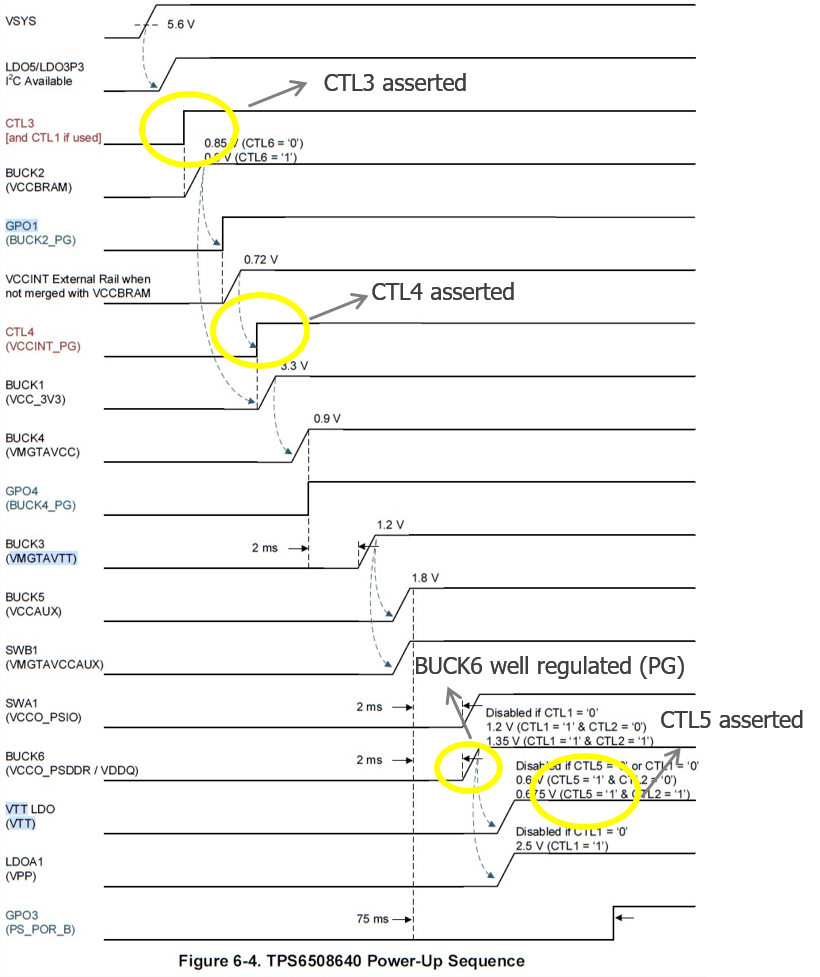Other Parts Discussed in Thread: TPS51200
Hi
I'm referring datasheet of TPS650864, whose version is SWCS138C, and I have a question for Figure 6-3 TPS6508640 Power Map example.
It was not clear for me how to use GPO2 in Figure 6-3.
Could you tell me a role of GPO2 as I2C GPO in Figure 6-3.
BestRegards


